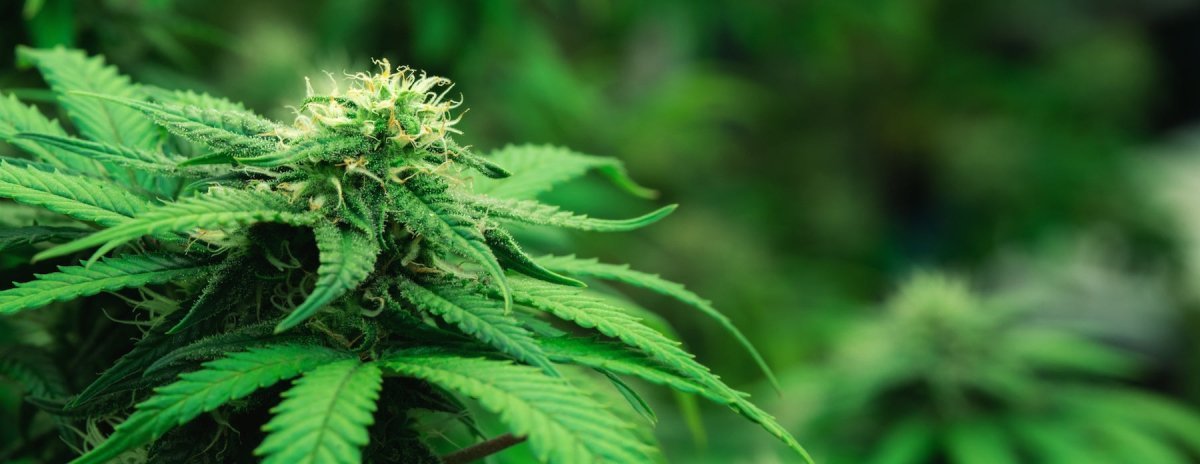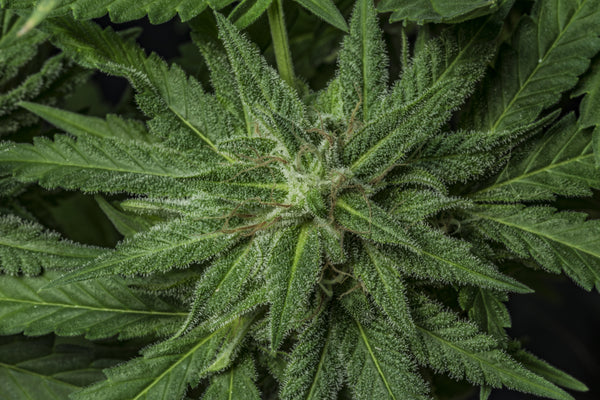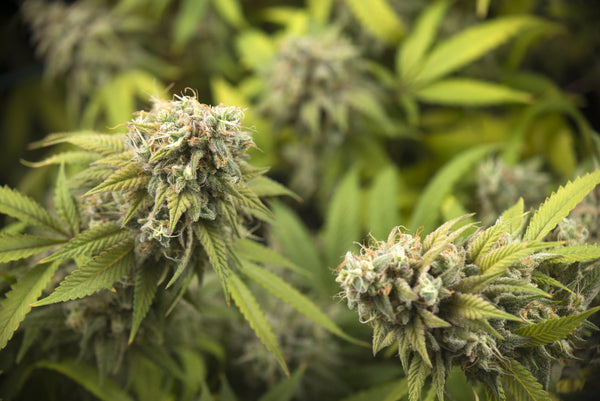Recent posts
-

-
 What Are THCa Diamonds?October 14, 2025
What Are THCa Diamonds?October 14, 2025 -
 Delta 9 Gummies GuideOctober 8, 2025
Delta 9 Gummies GuideOctober 8, 2025 -
 Head High vs Body High: A Guide to Cannabis EffectsOctober 1, 2025
Head High vs Body High: A Guide to Cannabis EffectsOctober 1, 2025 -
 What is THCA Crumble?September 22, 2025
What is THCA Crumble?September 22, 2025 -
 10 Ways to Elevate Self-Care Awareness MonthSeptember 14, 2025
10 Ways to Elevate Self-Care Awareness MonthSeptember 14, 2025

Indica vs Sativa: A Comprehensive Guide to Cannabis Varieties
By Zero Point
Table of Contents
Since their introduction over 200 years ago, the terms "Indica" and "Sativa" have been used to categorize cannabis plants based on appearance and effects. However, their relevance in modern cannabis is being questioned by new research.
What Do The Terms Indica and Sativa Mean?
Cannabis, a genus of flowering plants in the Cannabaceae family, includes three primary species: Cannabis sativa, Cannabis indica, and Cannabis ruderalis. While ruderalis is less commonly discussed due to its lower THC content and limited use, Indica and Sativa are the two main types that dominate the conversation in both recreational and medicinal cannabis circles.
The History of Indica and Sativa
The classification of cannabis into Indica and Sativa dates back to the 18th century when European botanists began documenting the plant. Carl Linnaeus identified Cannabis sativa in 1753, while Jean-Baptiste Lamarck classified Cannabis indica in 1785. These classifications were based on the plant's physical characteristics and geographic origins. Indica varieties were found in regions such as India and Pakistan, while Sativa varieties were identified in Europe and western Eurasia.
Today, these terms are still used to differentiate cannabis varieties, but their scientific accuracy is debated. Instead of relying solely on these traditional classifications, many experts now emphasize the importance of chemical profiles, such as cannabinoid and terpene content, to understand the effects and benefits of different strains more accurately.
Physical Differences Between Indica and Sativa
Indica
- Appearance: Indica plants are typically short and bushy with wide leaves. They rarely exceed 6 feet in height.
- Leaf Structure: The leaves of Indica plants are broad and have a deep green color, often with purple hues.
- Growth Cycle: Indica strains have a shorter flowering period, usually between 6 to 8 weeks, making them ideal for growers who want a quicker harvest.
- Climate: Indica plants are better suited for cooler climates and have a higher resistance to cold.
Sativa
- Appearance: Sativa plants are tall and thin, often reaching heights of up to 12 feet or more.
- Leaf Structure: The leaves of Sativa plants are narrow and light green.
- Growth Cycle: Sativa strains have a longer flowering period, typically between 10 to 16 weeks.
- Climate: Sativa plants thrive in warmer climates with longer growing seasons.
Chemical Composition: Cannabinoids and Terpenes
The effects of Indica and Sativa strains are influenced by their chemical composition, specifically the cannabinoids and terpenes present in the plant.
Cannabinoids
Cannabinoids are the active chemical compounds found in cannabis. The two most well-known cannabinoids are THC (tetrahydrocannabinol) and CBD (cannabidiol).
- THC: This is the primary psychoactive compound in cannabis, responsible for the "high" associated with its use. Both Indica and Sativa strains contain THC, but the concentration can vary.
- CBD: This non-psychoactive compound is known for its therapeutic properties, including pain relief, anti-inflammatory effects, and anxiety reduction. Indica strains tend to have higher CBD levels compared to Sativa strains.
Terpenes
Terpenes are aromatic compounds found in many plants, including cannabis. They contribute to the plant's aroma, flavor, and effects. Some common terpenes found in cannabis include:
- Myrcene: Found in higher concentrations in Indica strains, myrcene has a musky, earthy scent and is believed to have relaxing effects.
- Limonene: Often found in Sativa strains, limonene has a citrusy aroma and is associated with elevated mood and stress relief.
- Pinene: This terpene has a pine-like aroma and is found in both Indica and Sativa strains. It is thought to promote alertness and memory retention.
- Linalool: With a floral scent, linalool is present in both types but is more common in Indica strains. It has calming and anti-anxiety properties.
Effects on the Mind and Body
The effects of Indica and Sativa strains can vary significantly, influencing both the mind and body in different ways.
Indica Effects
Indica strains are often described as providing a "body high." Here are some common effects:
- Relaxation: Indica strains are known for their calming effects, making them ideal for evening or nighttime use.
- Pain Relief: Due to their higher CBD content, Indica strains are often used to alleviate chronic pain and inflammation.
- Sedation: These strains can have sedative effects, which can help with insomnia and other sleep disorders.
- Appetite Stimulation: Indica strains may increase appetite, commonly referred to as the "munchies."
Sativa Effects
Sativa strains are typically associated with a "mind high." Here are some of their common effects:
- Energizing: Sativa strains are known for their uplifting and stimulating effects, making them suitable for daytime use.
- Creativity and Focus: Many users report increased creativity and improved focus when using Sativa strains.
- Euphoria: These strains can induce feelings of euphoria and well-being.
- Social Interaction: Sativa strains may enhance social interactions and communication.
Benefits of Indica and Sativa
Both Indica and Sativa strains offer a range of benefits, depending on the user's needs and the specific strain's properties.
Indica Benefits
- Anxiety and Stress Relief: Indica strains' relaxing effects can help reduce anxiety and stress.
- Muscle Relaxation: They are effective in relieving muscle tension and spasms.
- Sleep Aid: Indica strains are popular among those with insomnia or other sleep disorders.
- Nausea Reduction: These strains can help alleviate nausea and increase appetite, making them useful for patients undergoing chemotherapy or suffering from other conditions that cause loss of appetite.
Sativa Benefits
- Depression Management: The uplifting effects of Sativa strains can help manage symptoms of depression.
- Increased Focus: Sativa strains are beneficial for those needing enhanced concentration and productivity.
- Fatigue Reduction: They can provide an energy boost, making them useful for combating fatigue.
- Mood Enhancement: Sativa strains can elevate mood and promote feelings of happiness and euphoria.
Side Effects and Considerations
While cannabis can offer many benefits, it's important to be aware of potential side effects and considerations.
Indica Side Effects
- Drowsiness: The sedative effects of Indica strains can lead to drowsiness, which may not be suitable for daytime use.
- Dry Mouth and Eyes: Common side effects include dry mouth and dry eyes.
- Couch Lock: High doses can result in a heavy, immobile feeling known as "couch lock."
Sativa Side Effects
- Anxiety and Paranoia: Some users may experience increased anxiety or paranoia, especially with high THC Sativa strains.
- Insomnia: Due to their stimulating effects, Sativa strains may interfere with sleep if used too late in the day.
- Dry Mouth and Eyes: Like Indica strains, Sativas can also cause dry mouth and dry eyes.
General Considerations
- Tolerance: Regular use can lead to tolerance, requiring higher doses to achieve the same effects.
- Legal Status: The legality of cannabis varies by location, so it's important to be aware of local laws and regulations.
- Medical Conditions: Those with certain medical conditions or those taking specific medications should consult with a healthcare provider before using cannabis.
Popular Strains of Indica and Sativa
There are countless strains of Indica and Sativa, each with its own unique properties. Here are some popular examples:
Popular Indica Strains
- Northern Lights: Known for its relaxing and pain-relieving effects, Northern Lights is a classic Indica strain.
- Granddaddy Purple: This strain is famous for its deep purple buds and potent relaxing effects.
- Bubba Kush: Bubba Kush is well-known for its calming and sedative properties.
Popular Sativa Strains
- Sour Diesel: Sour Diesel is a popular Sativa strain known for its energizing and euphoric effects.
- Jack Herer: Named after the cannabis activist, Jack Herer is celebrated for its clear-headed and creative effects.
- Green Crack: Despite its controversial name, Green Crack is known for its invigorating and focus-enhancing effects.
Choosing the Right Strain for You
Selecting the right cannabis strain can depend on various factors, including your desired effects, tolerance level, and personal preferences. Here are some tips to help you choose:
Determine Your Goals
- Recreational Use: If you're using cannabis for recreational purposes, consider whether you want a relaxing or energizing experience.
- Medicinal Use: For medical use, identify the symptoms you want to alleviate, such as pain, anxiety, or insomnia.
Consider Your Experience Level
- Beginners: New users may want to start with strains that have a balanced THC to CBD ratio to minimize psychoactive effects.
- Experienced Users: Those with higher tolerance may prefer strains with higher THC content.
Research Strain Profiles
- THC and CBD Levels: Look at the cannabinoid content to find strains that match your desired effects.
- Terpene Profiles: Terpenes can influence the strain's effects and flavor, so consider their presence.
Consult with Experts
- Budtenders: Dispensary staff can provide recommendations based on your needs and preferences.
- Online Resources: Websites and forums dedicated to cannabis can offer valuable insights and reviews.
Cultivation Differences
For those interested in growing their own cannabis, understanding the cultivation differences between Indica and Sativa is essential.
Indica Cultivation
- Growth Time: Indica strains typically have a shorter flowering period, making them quicker to harvest.
- Space Requirements: Their shorter and bushier structure requires less vertical space, making them suitable for indoor growing.
- Climate: Indica plants are more resilient to colder climates and can tolerate temperature fluctuations better.
Sativa Cultivation
- Growth Time: Sativa strains have a longer flowering period, requiring more patience from growers.
- Space Requirements: Their tall and lanky structure needs more vertical space, often making outdoor growing more practical.
- Climate: Sativa plants prefer warm and tropical climates with long growing seasons.
Conclusion: Finding Your Perfect Strain
Indica and Sativa strains each offer unique benefits and effects, making them suitable for different purposes and preferences. Whether you're seeking relaxation, pain relief, or an energy boost, understanding the characteristics and properties of these cannabis varieties will help you make informed decisions. As the cannabis industry continues to evolve, new hybrid strains that combine the best of both Indica and Sativa are emerging, offering even more options for users.
By considering your individual needs, preferences, and goals, you can find the perfect strain to enhance your cannabis experience. Remember to start with small doses, especially if you're new to cannabis, and consult with healthcare professionals if you have any medical concerns. With the right knowledge and approach, you can enjoy the many benefits that cannabis has to offer.











